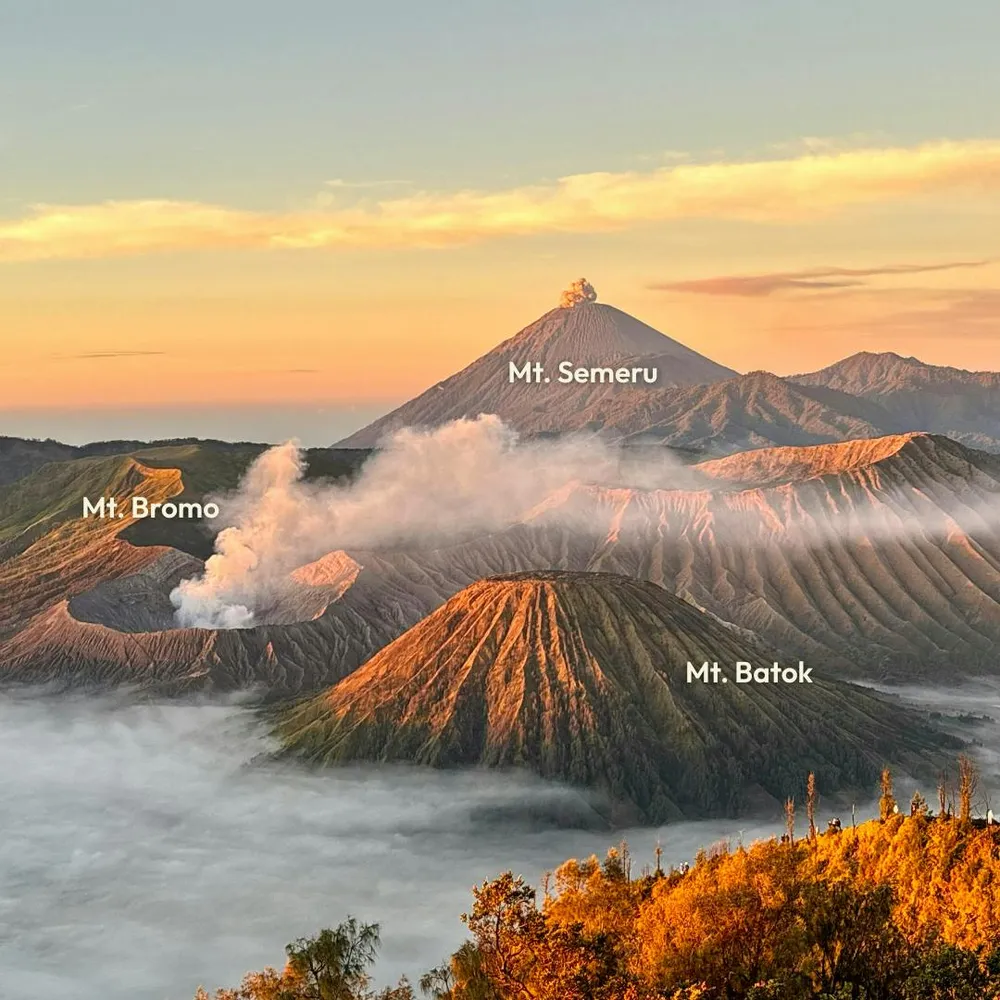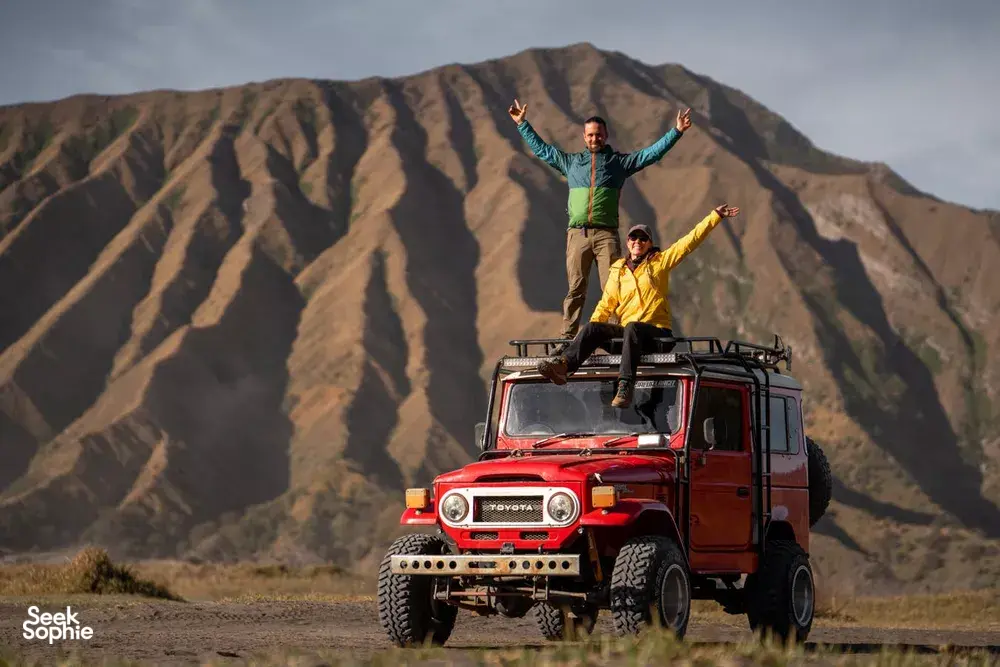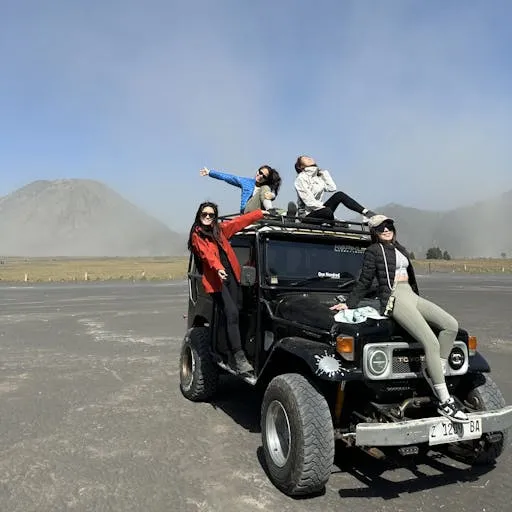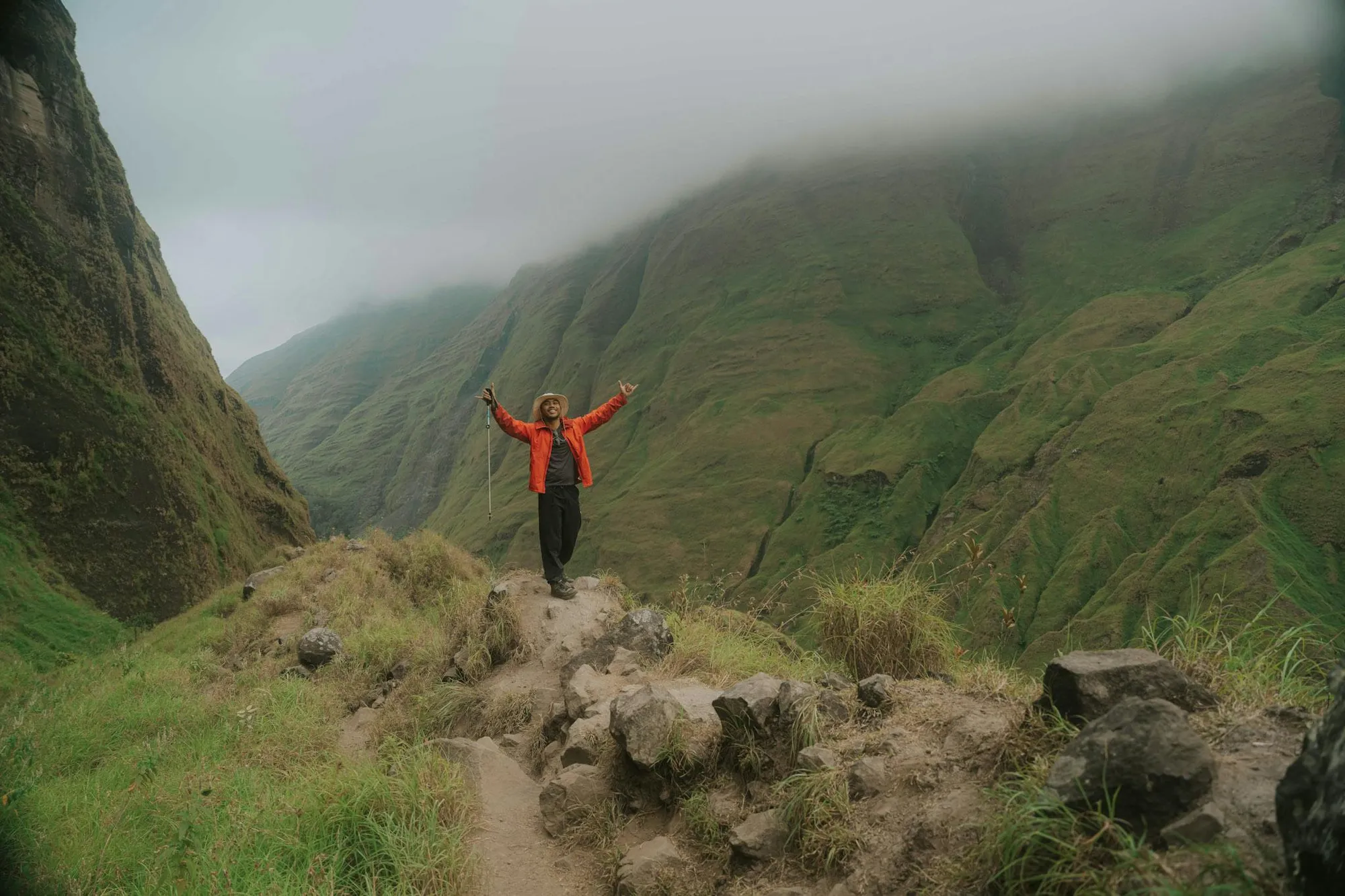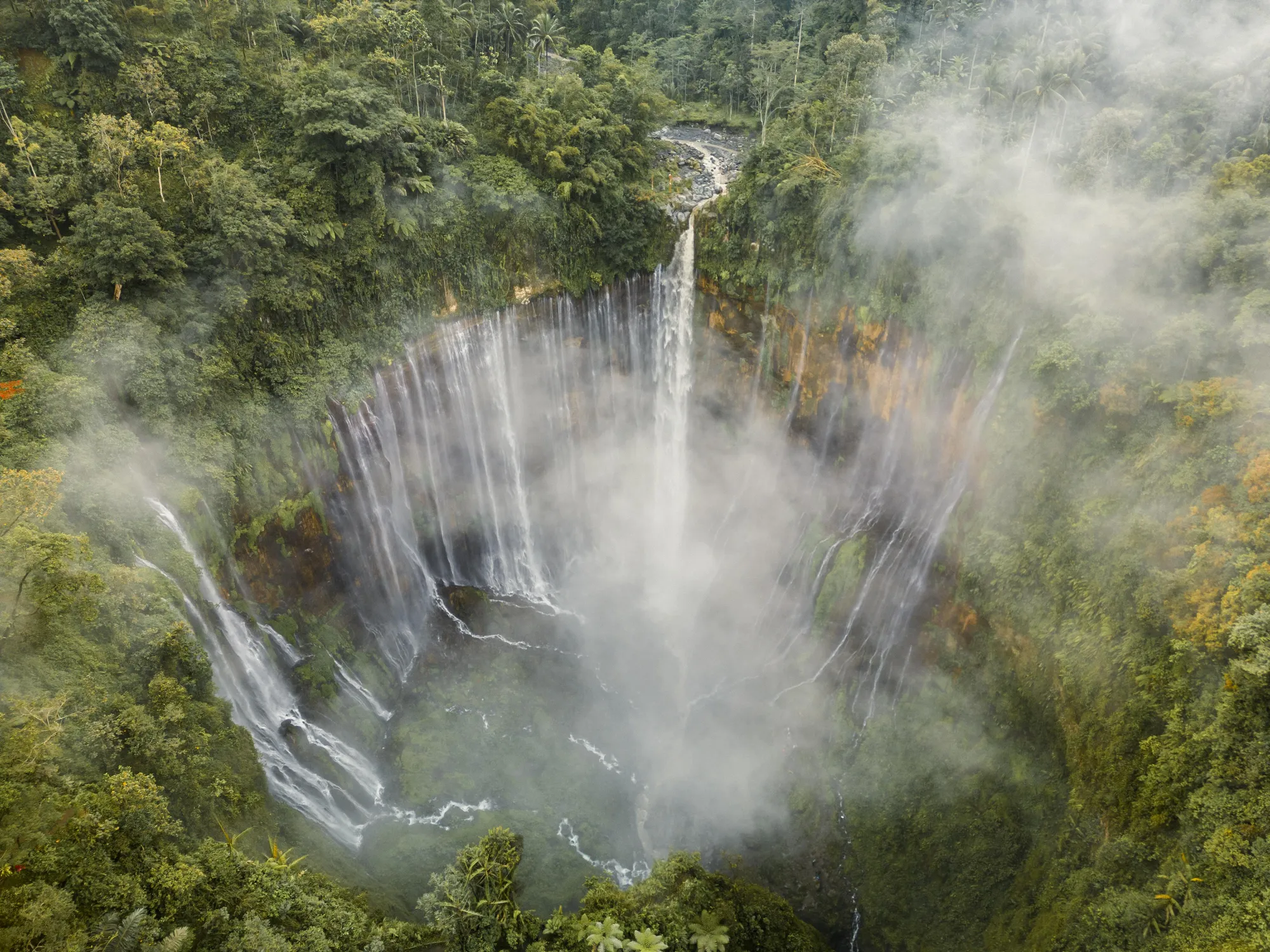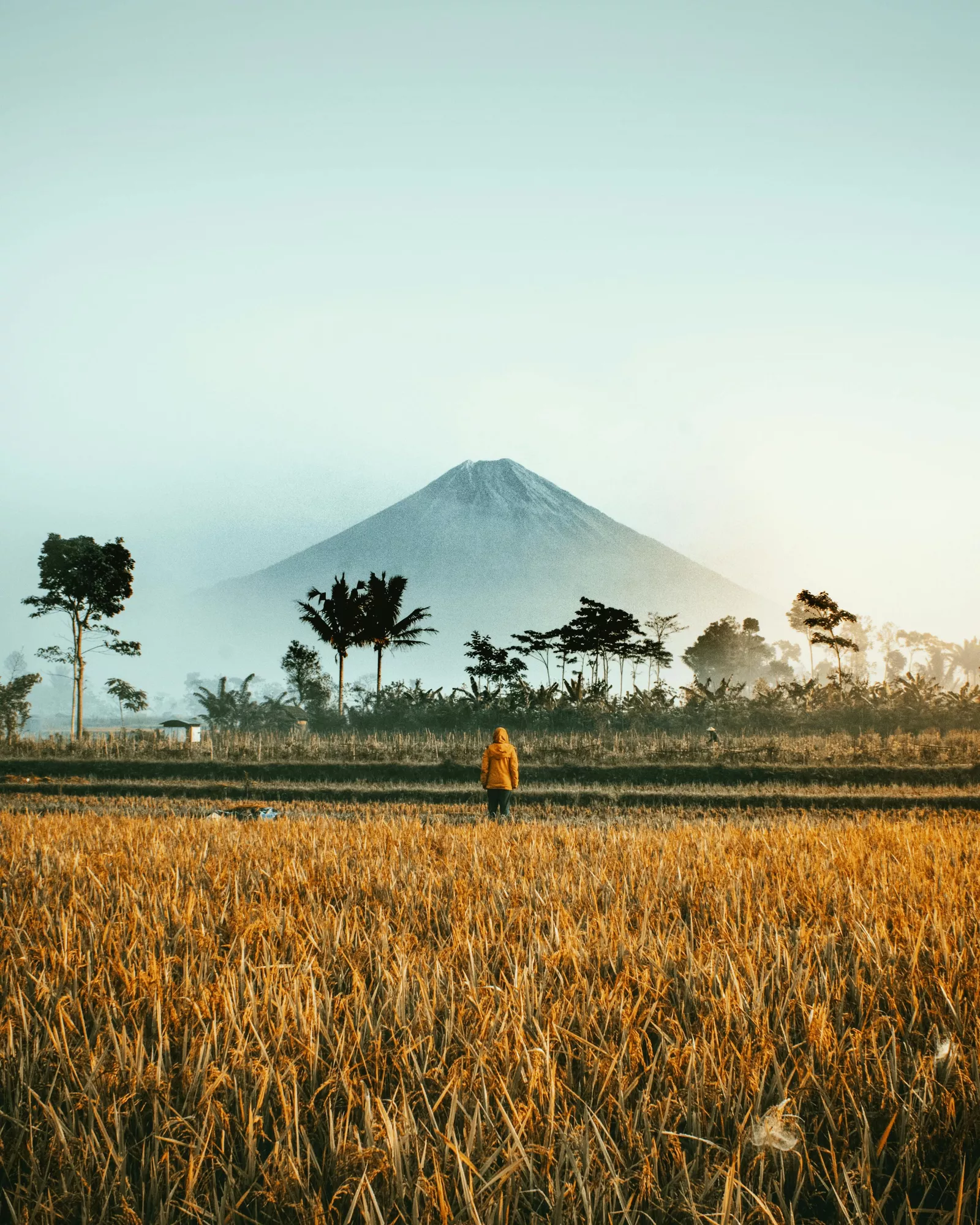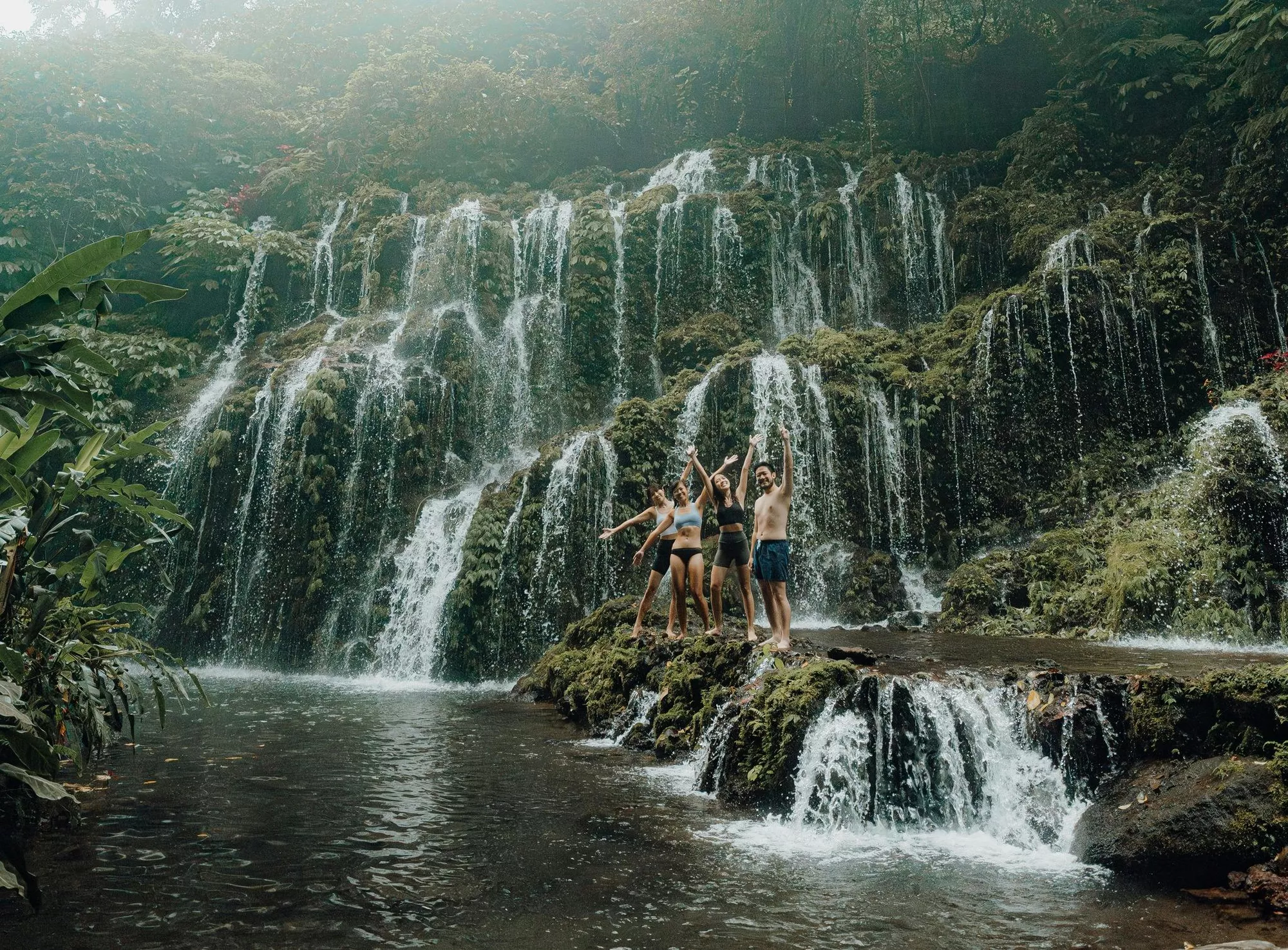布罗莫火山:你需要知道的一切 + 如何避开人群
关于游览布罗莫火山及周边地区的小贴士
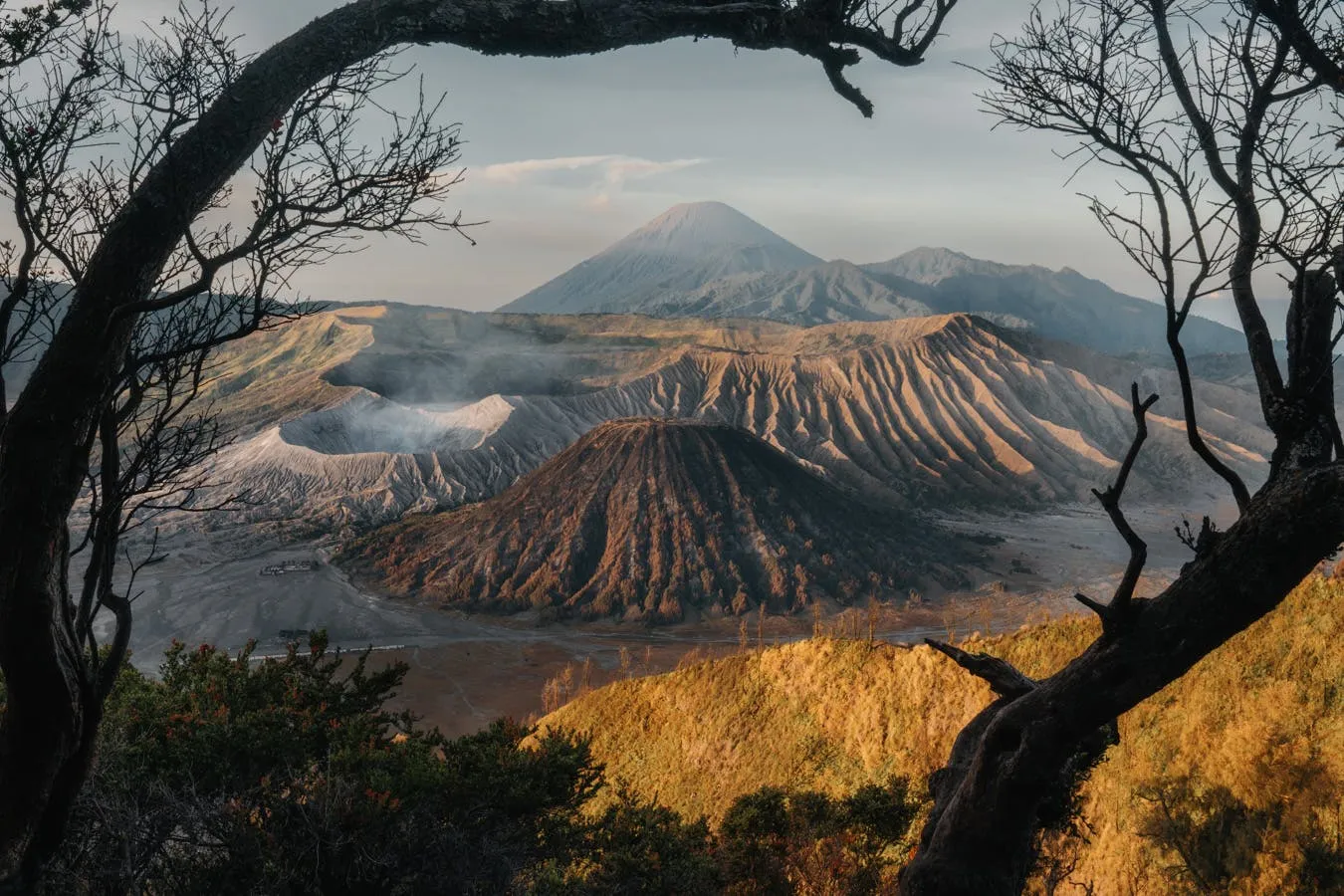
Mount Bromo is one of the most magical (and popular!) places to visit in East Java. Watching the sunrise here feels like stepping into the movie Dune, with its dramatic landscapes and an active volcano rumbling in the background. It’s also steeped in culture – we’d recommend going with a local guide to learn about its importance to the local Hindu community.
Bromo is the perfect starting point for an East Java adventure, with nearby gems like Tumpak Sewu Waterfalls and Mount Ijen. Here’s everything you need to know to plan your trip and avoid the crowds!
The Basics
What is Mt Bromo?
Mt. Bromo is an active volcano in East Java, famous for its jaw-dropping sunrise views.It sits right in the middle of a massive caldera called the Tengger Sand Sea - a huge, dune-like flatland surrounded by steep crater walls. It’s part of the Bromo-Tengger-Semeru National Park, along with Mount Batok and Mount Semeru, the tallest volcano in Java.
Beyond the views, it’s also a sacred spot for the local Tenggerese Hindu community, who hold festivals and ceremonies on its slopes. There’s even a temple, Pura Luhur Poten, sitting at the foot of the volcano on the Sea of Sand, a reminder that this isn’t just a tourist spot, but also a living place of worship.
What to do here?
Visiting Mt Bromo isn’t really a “hike”. It’s more of an adventure around volcanoes. The typical journey start before sunrise with a 4WD jeep picking you up from your stay.
You’ll head up to Mount Penanjakan, a mountain ridge across from Mt Bromo where all the famous viewpoints are: King Kong Hill, Seruni Point, and more. This is where you’ll catch that incredible sunrise view of Bromo, Batok, and Mount Semeru in the background.
After sunrise, you’ll drive down into the caldera itself and cross the Sea of Sand to get to Bromo’s base. From there, it’s a short climb (about 245 steps) up to the rim, where you can peer into the smoking volcano below.
Is it Worth Going?
Bromo’s gotten seriously popular, but we still think it’s still 100% worth visiting (just avoid weekends if you can!). It’s easily one of the most stunning volcanoes in Indonesia, and also one of the easiest to explore. Where else can you see a massive caldera and three volcanoes in one frame? It’s so popular for good reason!.
The hike up to the crater is manageable for most people, and standing right on the rim of an active volcano, feeling the ground rumble beneath you and watching smoke rise from the crater, is an unforgettable experience as well.
Who is it for?
Because of its accessibility, it's great for anyone who is mobile and can climb 20 minutes of steps. Although most of the experiences start early in the morning, there are a few that can accommodate sunset visits, which may be better suited for families with kids.
It's also a must for nature and landscape photographers. The light at sunrise over the Bromo volcano complex is unreal.
How to get there?
Start your journey by flying into Surabaya if you're coming from abroad, or Malang for domestic flights. From either of these two cities you can book a tour which includes a car and driver to take you either directly to the sunrise point, or to Cemoro Lawang, a small village nearby to rest for the night before heading to the view point.
Another option is to take the train to Probolinggo (going from Banyuwangi, where Mt Ijen is or Surabaya) where a few companies offer car and driver services to take travellers to Mt Bromo.
How much time to spend?
If you are not too rushed, go for two days staying in Cemoro Lawang overnight, stopping at additional points of interest along the way, and getting a night’s sleep so that you don’t have to wake up super early. But you can technically, see Mt Bromo in one day, departing in the middle of the night from Surabaya or Malang and getting back to the starting point by the afternoon. To make the most of your trip to East Java, we recommend to connect your trip with other nearby points of interest such as Tumpaksewu and Mt Ijen.
Best Time to Go?
If you are looking for the best opportunity to catch a clear sunrise, you should aim to go during dry season which is May to October, otherwise you may only get to witness a sea of clouds and fog. However, it does tend to be crowded, especially during European summer holidays, July to August. Aiming for the shoulder seasons of April-May and September-October is a good bet to avoid the major crowds while still likely getting clear skies for sunrise.
Things to See and Do
See the Sunrise over Bromo Volcanic Complex
Usually the first thing that all visitors do is see the sunrise from a view point across from Mt Bromo. From there, you will be able to see three volcanoes - Mt Batok, the most prominent one, Mt Bromo, in the middle, sometimes with a bit of smoke coming out and Mt Semeru the tallest one in the background. There are a few view points to choose from, but usually your guide will have his or hers favourite one, but you can try to request for your fave if you have one! We will include a list of the view points later in this article for your reference.
Seeing or Climbing Mount Batok
Mount Batok is the brother mountain to Mt Bromo and is very picturesque and green during rainy season. It is also the most prominent mountain during sunrise viewing. You will also pass by it when going from the Sea of Sand's parking lot to the crater rim. There are a few one of a kind tours that offer to climb Mt Batok for those travellers that are looking for a unique experience and a completely different view of Mt. Bromo.
Cross the Sea of Sand
Ash-coloured volcanic sand surrounds Mt. Bromo, and most people drive through it on a jeep, stopping for photos before heading up to the crater rim. The walk to the base of Bromo takes about 15–30 minutes, depending on where your Jeep drops you off. The wind can really kick up the sand, so you should at least bring sunglasses for some protection (or goggles if you’re hardcore), and a scarf, buff, or mask helps a lot with not breathing it all in.
Climb to the Bromo Crater Rim
You’ll usually head to the crater rim after catching the sunrise view from the viewpoint. After crossing the Sea of Sand, there are about 245 steps up to the rim from the base. There’s a short incline before the stairs, and the whole climb up and down takes around an hour, depending on your fitness and how busy it is.
There’s also an option to ride a horse across the Sea of Sand so you only need to climb the stairs; it costs around IDR 200,000. Since we’re not sure about the treatment of the animals, we don’t sell or endorse this option.
Itinerary Ideas for Mt Bromo
Day trip to Mount Bromo
If you are looking for a quick trip, you can do it in one day. Your hired driver or guide will pick you up in Surabaya or Malang at around midnight and take you straight to the viewing point. You will be back at the starting point by early afternoon.
2D1N Trip with Overnight in Cemoro Lawang
This will mean leaving early on day one from Surabaya or Malang. It will give you an opportunity to stop at places along the way like the Madakaripura waterfall as well as to get a bit more rest in the town near by, since you won’t have to wake up as early to get to the view points for sunrise.
4D3N Mt Bromo + Tumpak Sewu Waterfall + Mt Ijen
You can also opt to add some other stops after you visit Mount Bromo. Lots of travellers like to add on a visit to Tumpaksewu Waterfalls which are another 3 hour drive away, but well worth the drive for the epic views. Many others will also go all the way to the eastern tip of Java Island to visit Mt Ijen to get a peek at the Blue Flames and travel inside the Ijen crater.
4D3N Mt Bromo + Mt Ijen + Sukamade Turtle Beach
In addition to Tumpak Sewu and Ijen, if you are making your way across east Java, you can consider stopping at Sukamade, a secluded and protected beach, where turtles come to lay their eggs. With the guidance of a park ranger, you can get fairly close to see this incredible sight.
2D1N Climb Mt Bromo & Mt Batok
If you are looking for an extra challenge and a unique point of view of Mt Bromo, you should consider climbing Mount Batok, the neighboring mountain to Mt Bromo. It’s not a very long hike, but the trail is picturesque and you get a great, up close encounter with Mt Bromo. This climb also requires additional permits, thus making it a less frequented route.
3D2N Mt Ijen + Taman Nasional Baluran + Mt Bromo
Baluran National Park has a unique landscape in Java, an African like savannah where you can find mouse-deer, peacocks and buffaloes. It’s a great addition to appreciate the extremely varied Indonesian natural landscape. This National Park is located close to Mt Ijen, so only makes sense to visit if you are going all the way across east Java.
Helpful Mt Bromo FAQ
Can I start my Bromo tour from cities other than Surabaya or Malang?
You can! You can start from Bali or Banyuwangi or even Yogyakarta. Although you will typically incur additional charges. If you are coming from Bali or Banyuwangi, you might as well combine your trip with Ijen and Tumpak Sewu Waterfalls.
Should I opt for a guide or is the driver enough?
You can manage with a driver only, however we recommend getting a guide as well because the driver will not be accompanying you for the full duration of the trip. They will usually take this time to rest as you will be taken to the sunrise view by a local jeep driver. With a guide, you will be accompanied for the entire duration of the trip which makes for a much more informative trip. Driver level of English also tends to be quite a bit poorer than those of professional guides.
What’s the best view point to see Mount Bromo sunrise?
There are many opinions on this, however after trying quite a few of them, we think that King Kong is the best as it has multiple viewing platforms so that visitors can split up and not crowd in one place. If you are going with a good guide, he can also take you from King Kong to Seruni viewing point via a quick 15-20 minute hiking path. This will give you a slightly different perspective and perhaps a better view depending on the weather.
Here is the run down of all the view points:
Bukit Penanjakan I & II: the highest view points, not too far from each other, I being slightly further back then II. In our opinion little too far away to catch the best views.
King Kong Hill (has 3 gathering areas): good because visitors can distribute around the various areas; very easy to get to and lots of shops near by including toilets (during the morning, closed in the afternoon)
Seruni: closest, but quite a few trees in the way; connected to King Kong Hill, so a good option for people looking to maximise the number of views for photos (can be trekked between the two in about 20-30 minutes)
Lovehill: good view, but quite crowded; very easy to walk to from where the Jeep drops off.
How hard is the hike to Mount Bromo rim?
We’d say it’s quite easy, especially compared to mountains like Mt. Ijen or Mt. Batur in Bali. From the Sea of Sand, there’s a short but fairly steep sandy slope (about 10–15 minutes) followed by around 245 steps up to the rim. Most people manage it just fine!
What should I pack?
Layers, layers, and more layers! It gets really cold up at the viewing points before sunrise (around 5–10°C) and the wind makes it feel even colder. If you’re from a tropical country and don’t do well with cold, go for at least three layers: heat tech/thermal base, a long sleeve/fleece, and a down jacket. Gloves are a great-to-have (we were honestly freezing), and double-layer your pants with heat tech underneath if you can.
If you want to be safe, bring a rain/windproof jacket (you never know in Southeast Asia!) and a scarf or buff - it helps with both the cold and the volcanic dust that can blow up on the Sea of Sand around Bromo. A headlamp is super useful for the night trek, and a bottle of water and some snacks are nice to have since it can be a while before breakfast.
You don’t need serious hiking shoes (comfy trainers work fine!) but something with grip or ankle support will make walking on the volcanic sand easier. Once the sun comes up and you head to the crater rim, you’ll probably want to peel off a couple pieces of clothing!
What are the park fees?
Mt Bromo is located within the Bromo Tengger Semeru National Park. Park entrance fees for foreigners ranges from IDR 220-330K, based on the day of the week.
How to avoid the crowds?
We recommend going during shoulder season which is March-May and September-October. Of course you can try to go during rainy season November-March, however you are risking not seeing the best of the views. You can also try to go during sunset, which will offer you the an alternative view. Although it might not be as impressive as sunrise, but you will definitely avoid the crowds. Finally make sure to avoid weekends and the Eid (locally known as Raya) Holidays, when it's super popular for locals to go.
If you’re with a good guide, you might even find your own quiet, private viewpoint, there are actually plenty of hidden spots around Bromo if you know where to look.
Can I use a drone?
Although you may find that some travellers are flying drones, technically the park authority does not allow drone flying at the sunrise view points or the crater rim. As there are a lot of people and some areas are actually quite hazardous to not be paying attention to your step, we highly recommend to not fly your drone here.
What's the difference between all the Bromo tours?
One of the main differences is that some are join-in while others are private. The majority of the join-in tours, although cheaper, are catered toward locals and the driver guides do not speak any English. With the private tours, the drivers tend to speak English fairly well and you also have a lot more flexibility to go at your own pace. You can also opt to go for a driver only private tour or one that includes a guide that will provide you with a lot more information as well as accompany you every step of the way.
Another difference is the other points of interests that the tour might include, such as an add-on visit to Tumpak Sewu Waterfall or a road trip all the way to Mount Ijen.
Ready to book a Mt Bromo trip?
👇 Check out the best Mt Bromo experiences here - from 1 to 4 days (including Ijen and Tumpak Sewu!)

